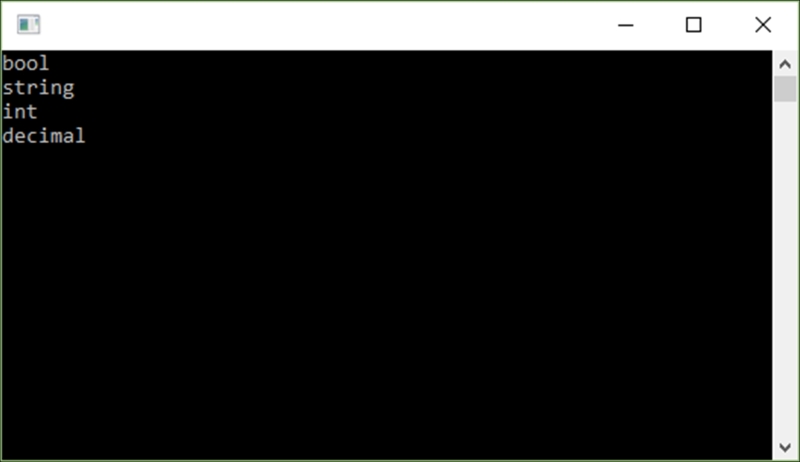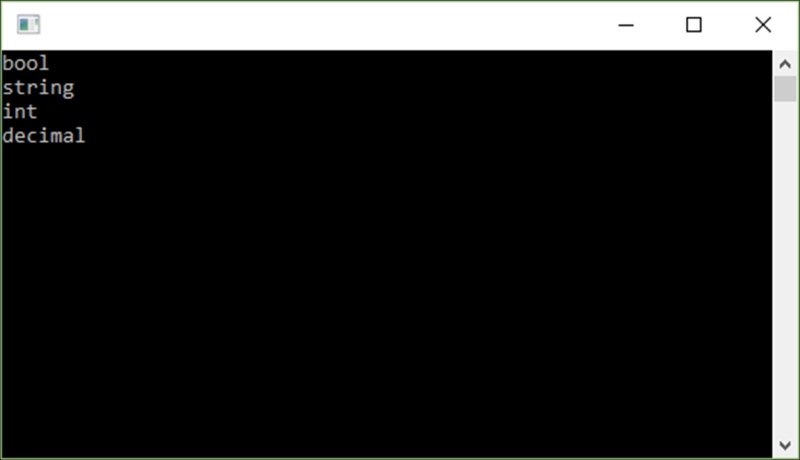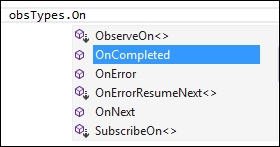Being developers, we should all be quite familiar with events. Most developers have been creating events since we started writing code. In fact, if you have even dropped a button control on a form and double-clicked the button to create the method that handles the click of the button, you have created an event. In .NET, we can declare events using the event keyword, publish to the event by invoking it, and subscribe to that event by adding a handler to the event. We therefore have the following operations:
- Declare
- Publish
- Subscribe
With Rx, we have a similar structure where we declare a data stream, publish data to that stream, and subscribe to it.
First, we will see how an event works in C#. We will then see the working of an event using Rx and, in doing so, highlight the differences.
- In your console application, add a new class called
DotNet. To this class, add a property calledAvailableDatatype:public class DotNet { public string AvailableDatatype { get; set; } } - In the main program class, add a new static action event called
types. Basically, this is just a delegate and will receive some value, in our case, the available .NET data types:class Program { // Static action event static event Action<string> types; static void Main(string[] args) { } } - Inside
void Main, create aList<DotNet>class calledlstTypes. Inside this list, add several values of typeDotNetclass. Here, we will just add hardcoded data of some of the data types in .NET:List<DotNet> lstTypes = new List<DotNet>(); DotNet blnTypes = new DotNet(); blnTypes.AvailableDatatype = "bool"; lstTypes.Add(blnTypes); DotNet strTypes = new DotNet(); strTypes.AvailableDatatype = "string"; lstTypes.Add(strTypes); DotNet intTypes = new DotNet(); intTypes.AvailableDatatype = "int"; lstTypes.Add(intTypes); DotNet decTypes = new DotNet(); decTypes.AvailableDatatype = "decimal"; lstTypes.Add(decTypes);
- Our next task is to subscribe to this event with an event handler that is simply outputting the value of x to the console window. We will then raise the event each time we loop through our
lstTypeslist by adding the linetypes(lstTypes[i].AvailableDatatype);:types += x => { Console.WriteLine(x); }; for (int i = 0; i <= lstTypes.Count - 1; i++) { types(lstTypes[i].AvailableDatatype); } Console.ReadLine(); - When you have added all the code from step 1 to step 4, your console application should look like this:
class Program { // Static action event static event Action<string> types; static void Main(string[] args) { List<DotNet> lstTypes = new List<DotNet>(); DotNet blnTypes = new DotNet(); blnTypes.AvailableDatatype = "bool"; lstTypes.Add(blnTypes); DotNet strTypes = new DotNet(); strTypes.AvailableDatatype = "string"; lstTypes.Add(strTypes); DotNet intTypes = new DotNet(); intTypes.AvailableDatatype = "int"; lstTypes.Add(intTypes); DotNet decTypes = new DotNet(); decTypes.AvailableDatatype = "decimal"; lstTypes.Add(decTypes); types += x => { Console.WriteLine(x); }; for (int i = 0; i <= lstTypes.Count - 1; i++) { types(lstTypes[i].AvailableDatatype); } Console.ReadLine(); } } - Running your application will set our list with values and then raise the event created to output the values of the list to the console window:

- Let's see the working of events using Rx. Add a static
Subjectofstring. You might also need to add theSystem.Reactive.Subjectsnamespace to your project asSubjectslive in this separate namespace:class Program { static Subject<string> obsTypes = new Subject<string>(); static void Main(string[] args) { } } - After the code that created the list of
DotNet, we used+=to wire up an event handler. This time round, we will useSubscribe. This is theIObservableportion of the code. After you have added this, raise the event using theOnNextkeyword. This is theIObserverportion of the code. Therefore, as we loop through our list, we will callOnNextto pump out the values to the subscribedIObservableinterface:// IObservable obsTypes.Subscribe(x => { Console.WriteLine(x); }); // IObserver for (int i = 0; i <= lstTypes.Count - 1; i++) { obsTypes.OnNext(lstTypes[i].AvailableDatatype); } Console.ReadLine(); - When you have completed adding all the code, your application should look like this:
class Program { static Subject<string> obsTypes = new Subject<string>(); static void Main(string[] args) { List<DotNet> lstTypes = new List<DotNet>(); DotNet blnTypes = new DotNet(); blnTypes.AvailableDatatype = "bool"; lstTypes.Add(blnTypes); DotNet strTypes = new DotNet(); strTypes.AvailableDatatype = "string"; lstTypes.Add(strTypes); DotNet intTypes = new DotNet(); intTypes.AvailableDatatype = "int"; lstTypes.Add(intTypes); DotNet decTypes = new DotNet(); decTypes.AvailableDatatype = "decimal"; lstTypes.Add(decTypes); // IObservable obsTypes.Subscribe(x => { Console.WriteLine(x); }); // IObserver for (int i = 0; i <= lstTypes.Count - 1; i++) { obsTypes.OnNext(lstTypes[i].AvailableDatatype); } Console.ReadLine(); } } - When you run your application, you will see the same items output to the console window as earlier:

In Rx, we can declare an event stream with the Subject keyword. So, we have a source of events that we can publish to using OnNext. To see those values in the console window, we subscribed to the event stream using Subscribe.
Rx allows you to have objects that are just publishers or just subscribers. This is because the IObservable and IObserver interfaces are in fact separate. Also, note that in Rx, the observables can be passed as parameters, returned as results, and stored in variables, which makes them first class:

Rx also allows you to specify that the event stream is completed or that an error occurred. This really sets Rx apart from events in .NET. Also, it is important to note that including the System.Reactive.Linq namespace in your project allows developers to write queries over the Subject type because a Subject is an IObservable interface:

This is another feature that sets Rx apart from the events in .NET.
